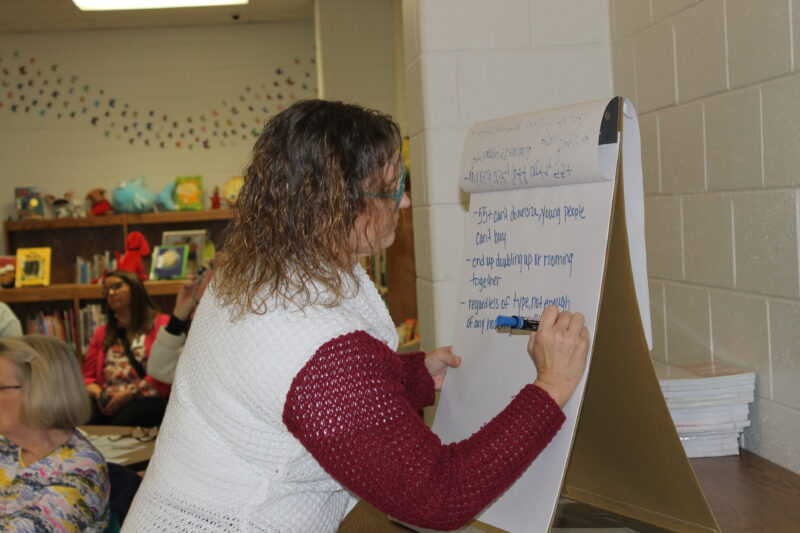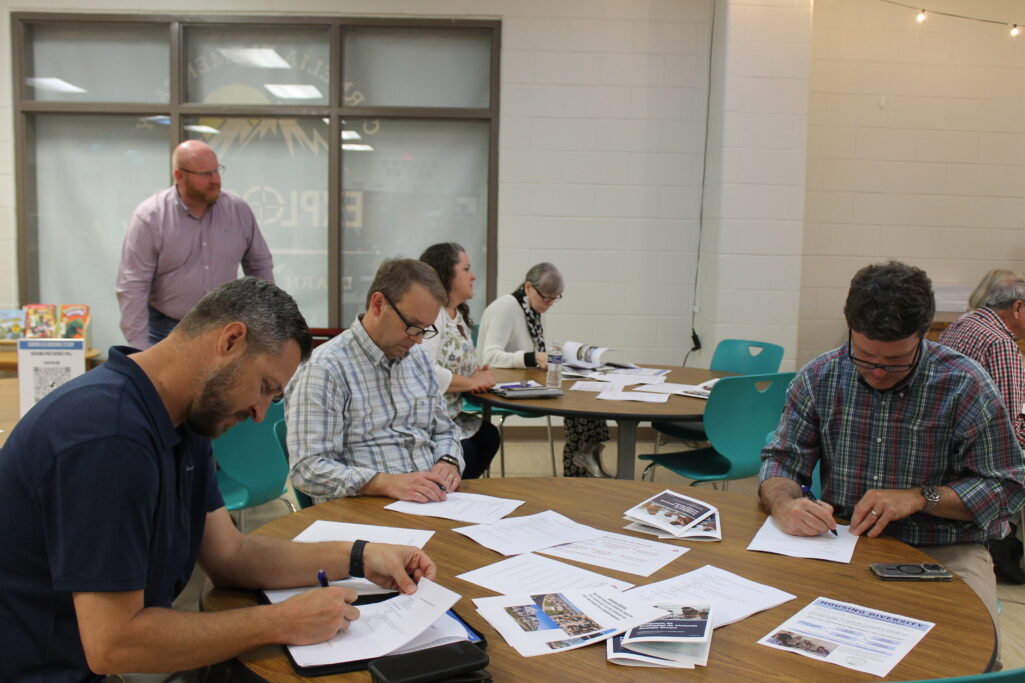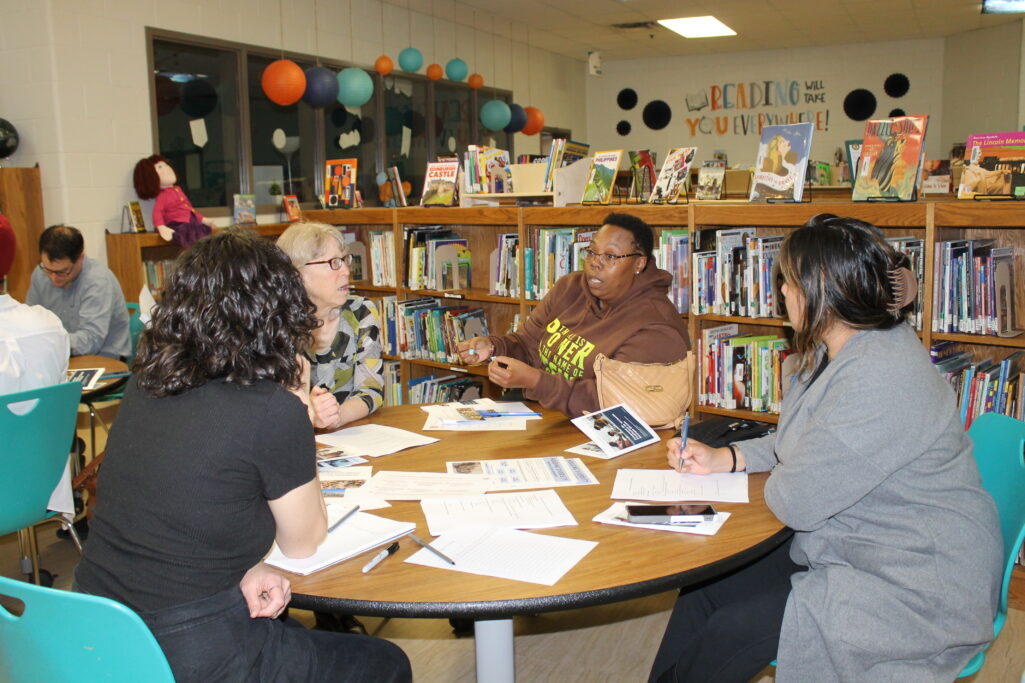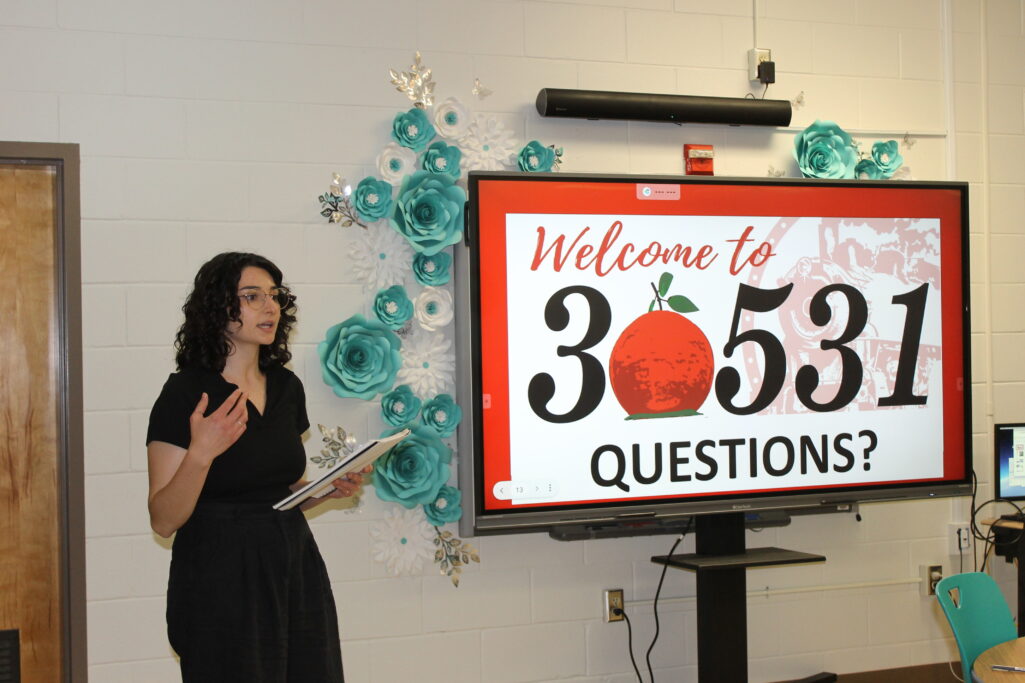
The city of Cornelia hosted a town hall meeting to open a community-wide dialogue on housing at Cornelia Elementary School Monday, March 31.
During the meeting, led by Cornelia’s Community and Economic Development Director Jessie Owensby, about two-dozen local stakeholders and residents delved into dynamics of development and housing needs within the city, which has a median income of around $58,000 and a diverse blend of populace.
Home to at least 50% of the top 10 industries in Habersham, Cornelia is the largest of seven cities in the county with a population of just over 5,000, according to the U.S. Census. In comparison, nearly 10,000 people reside just 20 miles northeast in Toccoa.
Current statistics indicate Cornelia is about 50% white, 40% Hispanic and 7-8% African-American in its demographic makeup.

“We need to figure out how we can provide housing that is nice, up to standard, available, attainable and affordable for our residents who need it,” Owensby said at the start of the town hall, pointing to 1,300 square-foot “starter” home units in Sugar Creek that recently went for over $300,000.
In Magnolia Villas, Owensby said, regular (3,000-square-foot) single-family homes have consistently sold for $400,000.
“Starter homes no longer exist,” Owensby said. “So, a lot of what this (program) is trying to do is gauge whether or not we need starter homes, or things like that.”
GICH team
The list of stakeholders involved in the discussions all consist of what’s referred to as the GICH (or Georgia Initiative for Community Housing) team.
In partnership with the University of Georgia and the state’s Department of Community Affairs, the team will provide input and feedback that will later be analyzed and used to draft a long-term plan for Cornelia’s Commission in deciding the future of development proposed throughout the city, according to Owensby.
With a lack of affordable housing gripping Cornelia as well as much of the U.S., the dialogue comes at a pivotal juncture for the future of the city, which, like other municipalities, must navigate such challenges in the years ahead.
To accommodate a growing workforce, Owensby introduced the concepts of infill (new construction on existing dilapidated properties) and redevelopment (remodeling existing homes in despair) as housing opportunities.

Types of housing
With industry, population growth and development headed to Habersham in the coming years, a variety of housing types were presented to the GICH team. Owensby and city officials believe these options, if moderately priced, could possibly curb a potential affordable housing crisis down the road.
Conventional subdivision: Single-family homes built on individual lots totaling no more than 1 acre.
Compact subdivision: Single-family homes built on compact lots – less than .25 acres.
Cottage court: A cluster of small, individual homes on small-sized lots – often arranged around a shared courtyard of common area.
Multiplex: A multi-unit building between 2-4 units within one building on one lot.
Small-scale multi-family (up to 20 units): The buildings contain multiple units, often in a single structure or a few smaller buildings between one and two stories.
Accessory dwelling units: Small, secondary homes built on the same lot as a primary single-family home – often used for rental or multi-generational living.
Mixed use: A building design (typically two to four stories) with commercial spaces on the ground floor, such as retail or office space, and residential units above.
Townhomes: Single-family homes that share one or two walls with adjacent units – typically ranging from two to three stories – each home with its own entrance and a small yard.
Midrise apartments: A large multi-family building with two to five stories of residential units, typically wrapped around a parking garage.
Feedback

During an open forum segment of the town hall, without favoring one specific housing option in particular, the GICH team and stakeholders described their preferred vision of the city’s future.
Larry Phillips, a retired residential builder who lives beyond Cornelia city limits, expressed a desire to see more senior-oriented communities. However, with markets driven by supply and demand, efforts to bring affordable (or income-based) housing to the area would likely come through certain government-led initiatives.
“And when you start bringing people in, there’s infrastructure (needs) you have to think about,” he said.
Community Planning Lead at the Georgia Conservancy Michaela Master, who will review much of the information collected during the town hall, said she spoke with residents about city demographics and a desire to see housing available for all groups.
“We talked about the difficulties – where, if certain groups weren’t able to find housing where they needed, how that could then trickle down and affect other groups,” Master said. “We also talked about the issue of 55-and-older communities not being able to downsize. And on the other side of the age range, younger folks not being able to rent affordably or find affordable housing to purchase.”
She added: “There’s a need for varied housing. I don’t think every person here is going to want the same thing. We all are in different places of life, and we need something for everyone.”
Matt Hill, owner of the Axe Armory in Cornelia, said the dialogue among his group centered on “preservation,” or “taking what’s existing and giving it a facelift.”
“Maybe, not make drastic changes, but make it a little more eye-appealing,” he said. “Also, green space is an important thing. Maybe have some parks and outdoor activities for all the family, not just children. Maybe have a greenway or a nice walkway.”
Brad Trotter, an engineer who said he favored a “variety” of housing options, also touched on issues of affordable housing, describing the problem as wage-driven.
“The cost has to be right, or it just won’t work,” he said. “If you look at what young people are making in this area at the entry-level, and then they have to afford this housing, I think there’s pent-up demand…the only way to get the cost down for people in this market is to increase the supply. You can’t really force salaries up in this area.”
Moving forward
Future town halls, as part of a three-year program to assess housing, are expected to come later this year, Owensby said.
Master will compile and analyze feedback gathered from each of the town hall meetings. That data inevitably could be utilized to develop a potential guide for city development in the next three years.

“(Georgia Conservancy) will be doing the actual assessment for this project,” Master said. “(That includes) data crunching, data gathering, conducting interviewing, synthesizing and communicating findings and translating that … Ideally, by the end of this, we’ll have some sort of toolkit for short and long-term actions to implement in the city.”
The next town hall meeting will take place from 6 p.m.-7:30 p.m. on Monday, April 21, at Shady Grove Baptist Church.






